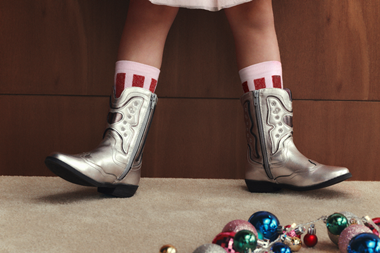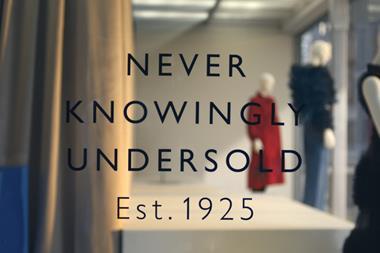Ensuring continued brand relevance relies on the drive and vision of people willing to take risks. You only need to look at the once much-loved retail brands that haven’t survived to be reminded of that, argues Charlotte Hardie

The ill-received rebrand of Jaguar has garnered more publicity in the last three weeks than the brand has arguably the last three decades.
It has attracted widespread mirth, vitriol, ridicule and scorn for its wildly leftfield rebranding of the century-old luxury car with a ‘woke on wheels’ campaign. Androgynous models, unwearable clothes and not a car in sight in the 30-second video teaser.
The advert itself is every Jaguar lover’s worst nightmare (Nigel Farage included, it seems). The point, though, that many people seem to have forgotten is that these days those Jaguar fans are hard to find.
This is a brand on its knees with little relevance. Jaguar has lost its achingly cool reputation associated with the E-type. Its broadest customer base is, let’s be honest, wealthy, retired men. There are no new customers queuing around the corner.
The much-awaited car was unveiled this week and in terms of weirdness it’s a physical manifestation of its advert. Owner TATA knows it has gambled big with, it must be said, the large budgets to be able to do so. The repositioning is a world away from its brand heritage and that’s a huge risk, but it was do or die.
But let’s take a step back. In terms of bold thinking and the ability to cut through the noise, perhaps there’s something to be admired here? Are there any lessons other industries can learn in terms of breathing life into flagging businesses in need of wholesale revival?
In terms of bold thinking and the ability to cut through the noise, perhaps there’s something to be admired here?
Let’s assume this is a calculated risk rather than an epic creative disaster. Jaguar is thinking longer term than next year. The new car isn’t even being sold yet. Like it or loathe it – probably the latter – what it has done very successfully is create a huge number of headlines and put the brand front and centre of potential customers of tomorrow.
Jaguar is 102 years old – older than the average brand life span. In general, brand survival is challenging – we’re seeing that right now with Asda. Meanwhile, Morrisons is in the midst of a turnaround, John Lewis has had some tumultuous years, and in the luxury retail space, Burberry and Mulberry are facing desperate times.
Ensuring continued brand relevance requires the drive and vision of those who are willing to take risks. You only need to look at the once much-loved retail brands that haven’t survived to be reminded of the high death rate – Matches Fashion, Woolworths, Wilko, Debenhams, Comet, the list goes on. Some came back to life in some guise, but before that what was their survival strategy? Doing more of the same? Death by a thousand cuts?
In our post-Reeves-budget world, one easy cost to slash is that of marketing. Is that wise? It’s difficult to make your brand heard in this noisy multichannel world. The fight for customer acquisition means it’s more important than ever to shout loudly and clearly.
You only need to look at the once much-loved retail brands that haven’t survived to be reminded of the high death rate
Sephora has mastered the art of creating a perfectly honed din on social media and talking with clarity to a young customer base desperate for the ‘viral’ products it’s stocking. In some ways it’s the lifeblood of the brand. Temu and Shein’s stratospheric rise to fame in the UK has been driven in part by throwing enough marketing cash at social media to maintain a relentless background digital hum.
To survive and thrive takes ingenuity. It’s easy to mock what Jaguar has done, it may have misjudged it, but it only needs to sell 50,000 of its new cars to consider this project a success.
The role of woke in advertising may already seem outdated. The car itself to me looks monstrous, but I hope there are 50,000 more who disagree. I can’t help but find myself applauding their bravery and desire to stand out.


























1 Reader's comment